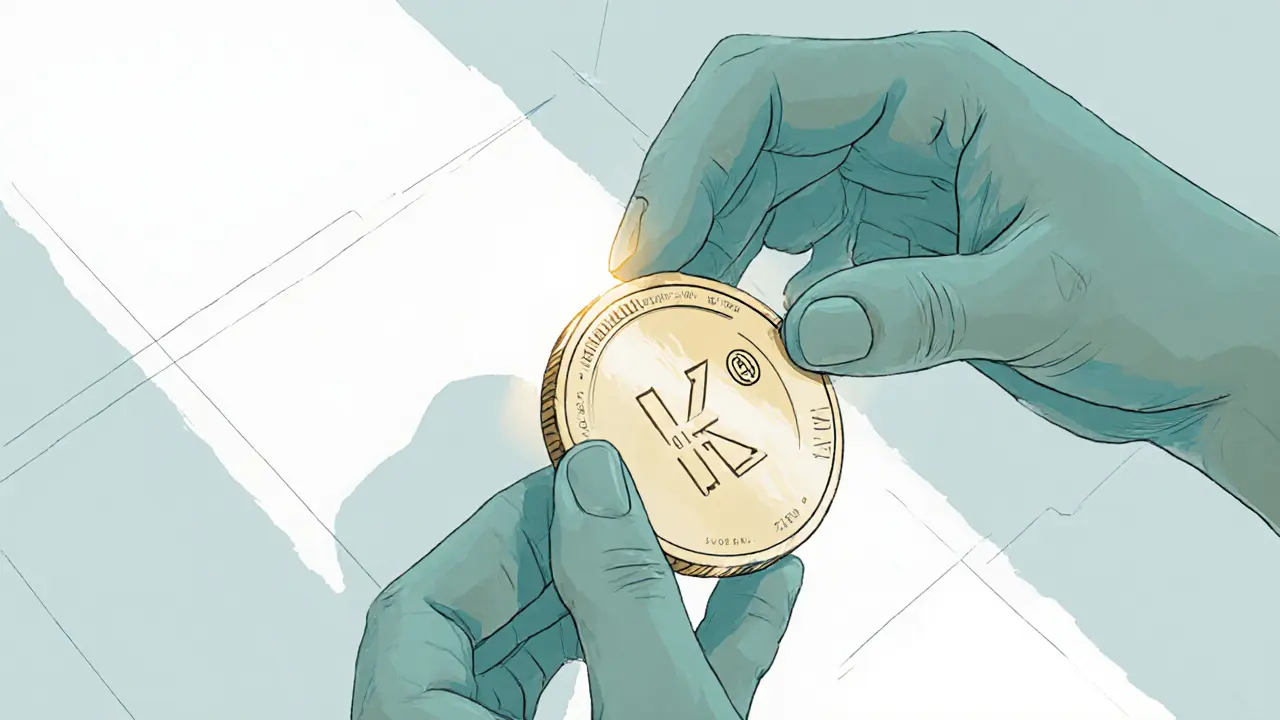Azit (AZIT) Price Tracker
Blockspot.io
Price: $0.0120
Market Cap: $3.1M
24h Volume: $126K
CoinCodex
Price: $0.01435
Market Cap: $5.9M
24h Volume: $295K
CoinMarketCap (15 Sep 2025)
Price: $0.01196
Market Cap: $4.2M
24h Volume: $112K
Price Comparison Result
If you’ve ever wondered what Azit (AZIT) actually does, you’re not alone. This guide breaks down the coin’s purpose, the tech that powers it, and where its market stands as of October 2025.
Quick Facts
- Azit is a proptech‑focused cryptocurrency built on the Klaytn blockchain.
- It powers an integrated loyalty‑points system that can be earned by walking, pinning locations, and using partner services.
- Price (Oct2025) ranges between $0.011and $0.014 across major trackers.
- Market cap is under $6million, making it a low‑liquidity, small‑cap asset.
- Technical indicators suggest neutral momentum with moderate volatility.
Azit (AZIT) is a cryptocurrency crafted for the property‑technology (proptech) and real‑estate industries. It operates on the Klaytn network, which was launched by Ground X, the blockchain arm of South Korean internet giant Kakao.
The platform’s standout feature is an Azit‑wide loyalty points system that lets users collect, redeem, and even cash out points across a suite of partnered services. Think of it as a universal rewards wallet for everything from rental payments to home‑improvement bookings.
What Is Azit and Why Does It Exist?
Azit aims to solve two persistent problems in real‑estate tech: fragmented reward programs and low digital adoption. By creating a single token that doubles as a utility coin and a points ledger, Azit hopes to streamline incentives for tenants, landlords, and service providers.
Unlike many crypto projects that target broad audiences, Azit’s niche focus means its value proposition hinges on real‑world utility rather than speculative hype. The coin’s ticker, AZIT, is used both for on‑chain transactions and for crediting "relaxation points" earned in the mobile app.
How the Loyalty Points System Works
The Azit mobile app gamifies everyday actions. Users earn points simply by walking a certain distance, and they can boost earnings by pinning their location at participating venues. Points are recorded on the Klaytn ledger, ensuring transparency and preventing double‑spending.
Once accumulated, points can be exchanged for goods in the app’s marketplace, used to pay for prop‑tech services (like smart‑home installations), or converted back into AZIT tokens for trading on supported exchanges.
Because the system is built on Klaytn’s smart‑contract capabilities, partners can create custom reward rules without needing deep blockchain expertise. This reduces integration costs and encourages broader adoption among real‑estate firms.
Technical Foundations: Klaytn and GroundX
Klaytn is an enterprise‑grade public blockchain that emphasizes low transaction fees and fast finality. Its consensus model mixes practical Byzantine Fault Tolerance (pBFT) with a governance council, providing both security and scalability.
GroundX, the developer behind Klaytn, supplies robust SDKs and tooling that Azit leverages to issue its token, manage the points ledger, and interact with partner APIs. This partnership gives Azit a reliable infrastructure compared to newer, less‑tested networks.
The choice of Klaytn also means AZIT benefits from existing corporate adoption in South Korea, where several fintech and e‑commerce platforms already run on the same chain. This ecosystem effect can lower onboarding friction for future prop‑tech partners.

Market Snapshot (October2025)
Azit’s market data is scattered across several price aggregators, reflecting its limited exchange coverage. Below is a side‑by‑side view of the most recent figures:
| Source | Price (USD) | Market Cap (USD) | 24‑h Volume (USD) |
|---|---|---|---|
| Blockspot.io | $0.0120 | $3.1M | $126K |
| CoinCodex | $0.01435 | $5.9M | $295K |
| CoinMarketCap (15Sep2025) | $0.01196 | $4.2M | $112K |
The discrepancies highlight low liquidity and the fact that AZIT trades on a handful of smaller exchanges. Daily price swings of 5‑6% are common, and the overall market sentiment has recently leaned toward “greed” on the Fear&Greed Index (value75).
Technical Analysis and Price Outlook
Key indicators as of October2025:
- 50‑day Simple Moving Average (SMA): $0.0143
- 200‑day SMA: $0.0160
- 14‑day Relative Strength Index (RSI): 50.07 (neutral)
- Volatility (30‑day): ~5.12%
These numbers suggest AZIT is not overbought or oversold, and the price is hovering just below its short‑term SMA. Analysts on CoinCodex forecast a potential dip to $0.0108, a 25% decline from current levels, before the token finds a new ceiling.
Long‑term (2026) projections show a wide channel: $0.008to $0.032, with an average expected price around $0.016. Such a spread reflects both the speculative nature of a niche prop‑tech token and the uncertainty surrounding broader real‑estate blockchain adoption.
Risks and Challenges
While Azit’s concept is compelling, several risk factors loom:
- Liquidity risk: Small market cap and limited exchange listings can cause sharp price moves.
- Platform dependency: Azit relies on Klaytn’s continued growth; any setback for Klaytn could hurt AZIT.
- Niche market constraint: Focusing solely on prop‑tech may cap user growth compared to general‑purpose cryptos.
- Regulatory exposure: Real‑estate tokenization faces evolving legal frameworks in many jurisdictions.
- Adoption uncertainty: Real‑world usage metrics for the loyalty app are scarce, making it hard to gauge network effects.
How to Acquire and Use AZIT
Getting started is straightforward:
- Set up a Klaytn‑compatible wallet (e.g., Kaikas or Klaytn‑Scope).
- Buy AZIT on one of the listed exchanges (check the table above for the most active pairs).
- Transfer the tokens to your wallet; you’ll see the balance under the AZIT ticker.
- Download the Azit mobile app from Google Play or the Apple App Store.
- Enable location services to start earning relaxation points while you walk.
- Visit partner locations, pin your spot, and watch points accumulate in real‑time.
- Redeem points for services or swap them back to AZIT through the in‑app exchange.
Because the token doubles as a utility and a rewards medium, holding AZIT can generate passive benefits even when you’re not actively trading.
Frequently Asked Questions
What is the main purpose of Azit?
Azit aims to unify loyalty and payment functions for the prop‑tech ecosystem, allowing users to earn points through everyday actions and spend them on real‑estate‑related services.
Which blockchain does Azit run on?
Azit is built on the Klaytn public blockchain, developed by GroundX.
How can I earn Azit points?
Points are earned by walking, pinning locations in the app, and using partner services that integrate the Azit loyalty API.
Is AZIT a good investment?
AZIT is a high‑risk, low‑liquidity asset. Its value depends heavily on adoption of the prop‑tech platform and the success of Klaytn. Consider your risk tolerance before investing.
Where can I trade AZIT?
AZIT is listed on a few smaller exchanges; refer to the price comparison table for the most active markets.

